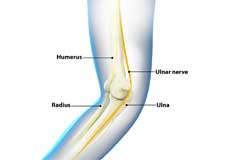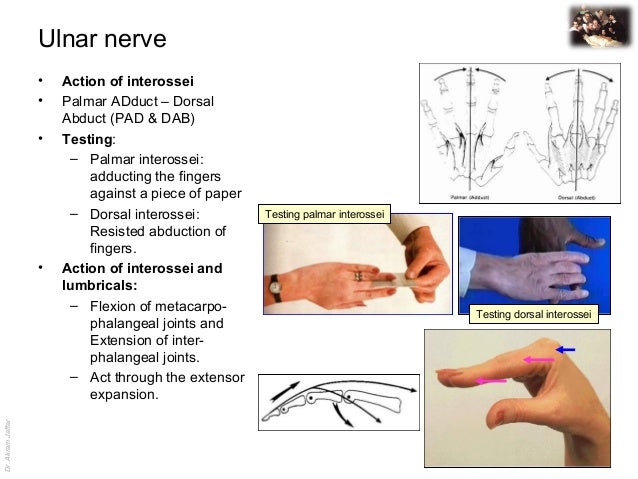
Two entities of this condition, entrapment beneath the humeroulnar aponeurotic arcade and external compression of the ulnar nerve in the retroepicondylar groove, have been identified, comprising patient groups with varied preoperative characteristics and type of work 2. Ulnar nerve compression at the elbow (UNE) is the second most common peripheral entrapment neuropathy in the upper extremity and most often affects people of working age 1.
#ULNAR NERVE COMPRESSION MANUAL#
In conclusion, unemployment, younger age at surgery, manual labour, transposition, and revision surgery were related to prolonged RTW. Comparisons before and after 2008 showed occupational differences and differences in RTW, where cases operated before 2008 more often had permanent sickness benefit, but the reform of the social insurance system did not seem to influence RTW. Prolonged RTW was approximately four times more likely after transposition than after simple decompression. Prolonged RTW was seen among younger, manual workers and after transposition or revision surgery. A sub-analysis of the exact number of weeks before RTW (n = 201) revealed longer RTW for unemployed cases compared to employed cases. Surgically treated cases of UNE (n = 635) from two time periods (2004–20–2014) and two healthcare regions (Southern and South-eastern) were studied retrospectively regarding age, sex, comorbidities, occupation, type of surgery and time to RTW. We aimed to examine RTW postoperatively for UNE, variations among surgical methods, and potential risk factors for prolonged RTW (sick leave > 6 weeks). In 2008, the Swedish Social Insurance Agency reformed the national insurance policy. Surgically treated patients may not immediately return to work (RTW) postoperatively. This article describes a case of ulnar nerve entrapment of the elbow in a 28-year-old woman as a result of compression by the anconeus epitrochlearis muscle and includes magnetic resonance imaging findings, surgical correlations, and clinical and neurophysiologic findings.Ulnar nerve compression at the elbow (UNE) frequently affects people of working age. This is probably the result of static compression of the nerve and increased cubital tunnel pressure, even when the elbow is in extension. Medial elbow pain may be more exacerbated in these patients rather than the more common sensorial symptoms. Neurophysiologic findings in anconeus epitrochlearis-associated ulnar neuropathy indicate subacute onset of symptoms rather than the chronic demyelinating process that is seen in idiopathic ulnar neuropathy. Ulnar neuropathy as a result of the anconeus epitrochlearis muscle usually has different characteristics than idiopathic disease, including younger age at onset, more rapid progression with a short duration of symptoms, distinct neurophysiology with velocity drop or conduction block of the ulnar nerve, and edema of the anconeus epitrochlearis muscle on magnetic resonance imaging. It is a congenital accessory muscle between the medial humeral epicondyle and the olecranon that covers the posterior aspect of the cubital tunnel and is usually an operative finding, not a preoperative diagnosis.

The anconeus epitrochlearis muscle is a common anatomic variation, with a prevalence of up to 34%, but the clinical diagnosis of ulnar neuropathy of the elbow as a result of this variation is rare, with an unknown prevalence. However, several anatomic variations, including the anconeus epitrochlearis muscle, have been reported to cause ulnar nerve compression.

Ulnar neuropathy at the elbow is the second most frequent entrapment neuropathy and is considered idiopathic in most patients.


 0 kommentar(er)
0 kommentar(er)
